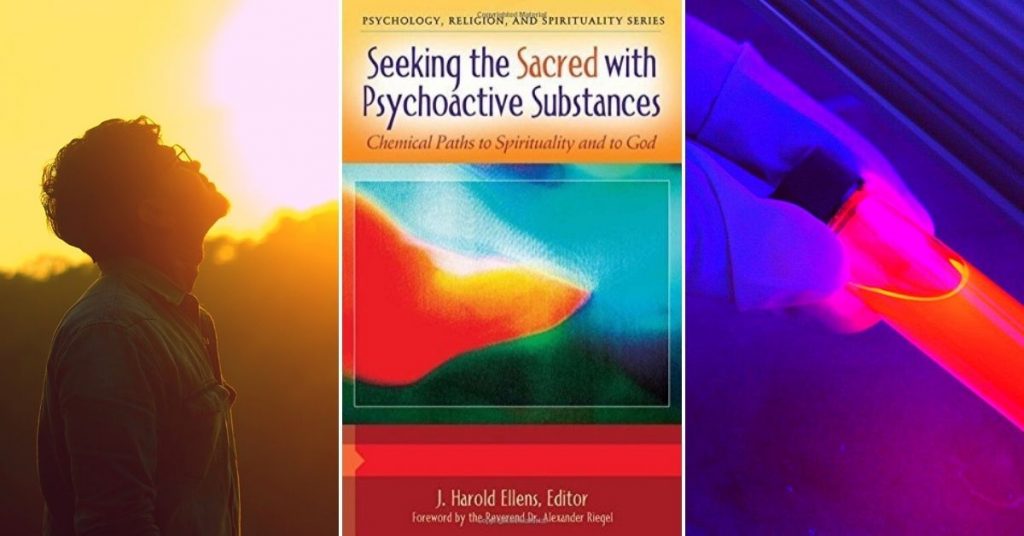Seeking the Sacred with Psychoactive Substances (Volume 1)
Seeking the Sacred with Psychoactive Substances: Chemical Paths to Spirituality and to God, Volume 1: History and Practices, edited by J. Harold Ellens, Praeger, 2014.
This is part one of a two-part review of this publication in the Psychology, Religion, and Spirituality Series published by Praeger.
The idea that psychoactives play a significant role in many historical and contemporary religious practices is not radically new, but the fact that their use is so widespread and that they are practically everywhere one dares to look may come as a surprise to many readers of this tome. The first volume of this brilliant collection of essays by a wide variety of authors is dedicated to the history and practices regarding the use of psychoactives in religion.
The volume starts with an essay by the eminent scholar Thomas Roberts, who argues for three main ideas: 1) that in the current era, religion is changing from the word propagated through scripture to increasingly democratised, personal sacred experiences cultivated within the lives of individuals; 2) that the common core of all religions is mysticism, in other words the idea of a perennial philosophy; and 3) that psychedelics can cause mystical experiences. If we follow this line of argument, the essays in this volume are either illustrations or explanations of these principles.
To start with the latter, we find two essays by Michael Winkelman detailing the way in which shamanic consciousness played a key role in human evolution. He argues that altered states were selected for by the process of evolution, because they allowed for the knitting together of groups of early hominids, making them more resilient. He finds neurological correlates of all the major components of the psychedelic experience within the evolutionary development of the human brain, extending to well before humans separated from other species, but highly developed only within them. These essays show that humans were primed to have these experiences and are sensitised to a wide variety of substances in order to further their survival.
The historical examples extend all the way into antiquity and even prehistory, showing that various sacred substances were part of important cultures worldwide from a very early point in history. The spread of cannabis throughout Europe and Asia, for example, stretching almost over the entire Eurasian continent in a time when cultural exchange was previously thought to be limited, is remarkable (essay by Chris Bennett). Similarly, the use of psychoactives within Greek and Roman cults extends beyond the large-scale rituals at Eleusis, and furthers the idea that psychoactives provided the bass drone that reverberated throughout religious life within the roots of Western culture (essays by Carl P. Ruck and David Hillman). There are even arguments for the use of psychedelics within some sects in medieval Roman Catholicism, showing that even organised religions – whose history we now consider to be free of such drug use – were at some point influenced by them (essay by Dan Merkur).
In modern times, of course, psychoactives played a large role in the spirituality of the hippies, to which a two-part chronology is dedicated. They also influenced the spread of Buddhism and other Eastern spiritualities in the West. The former is discussed in some of the most interesting essays in the book. Author Dan Merkur strikes a good balance between dutifully reporting the phenomenon and maintaining a critical stance towards it. The essay on the latter subject is a transcription of a discussion between James Fadiman and Buddhist scholar Kokyo Henkel, which is a great way to approach the subject in a lively manner. Their exchange shows the importance of psychedelics in the growth of Buddhism in the US, giving one of many examples of how the psychedelic experience inspires people to start their own spiritual practice.
Two of the chapters stand out because they are descriptions of personal experiences and thereby examples of how psychoactives can be used within modern post-secular religious practice (essays by Julian Vayne and Clark Heinrich). While these are not necessarily the most interesting, they do illustrate the way in which rituals can be devised around the use of psychoactives in order to engender spiritual experience.
The last two chapters, by Benedictine monk David Steindl-Rast and professor of psychology of religion Ralph W. Hood, respectively, are more reflective. Steindl-Rast argues that psychedelics provide a genuine path towards spiritual experience and that we shouldn’t prevent anyone from walking this path in a conscientious way. Hood argues that the study of the spiritual aspects of the psychedelic experience should be methodologically careful, and he shows that trying to isolate the spiritual experience from its surrounding ritual and community can distort the results. Both propose that the use and study of psychoactives be embedded in spiritual communities, bound by rituals and mutual compassion.
The broad scope of the essays in this first volume urges one to reconsider the long-held belief that psychoactives merely ‘played a role’ in the history of religion. Instead they suggest that this role was extensive and might even have been decisive in the formation of the spiritual faculty in man. With the obvious exception of the two essays on personal experience, all essays are well-documented and provide a plethora of references for those wanting to double-check if the authors don’t read too much into the available evidence. This volume provides a wealth of ideas and knowledge for anyone interested in the spiritual aspects of the psychedelic experience.
Buy this book on bookdepository.com and support the OPEN Foundation

